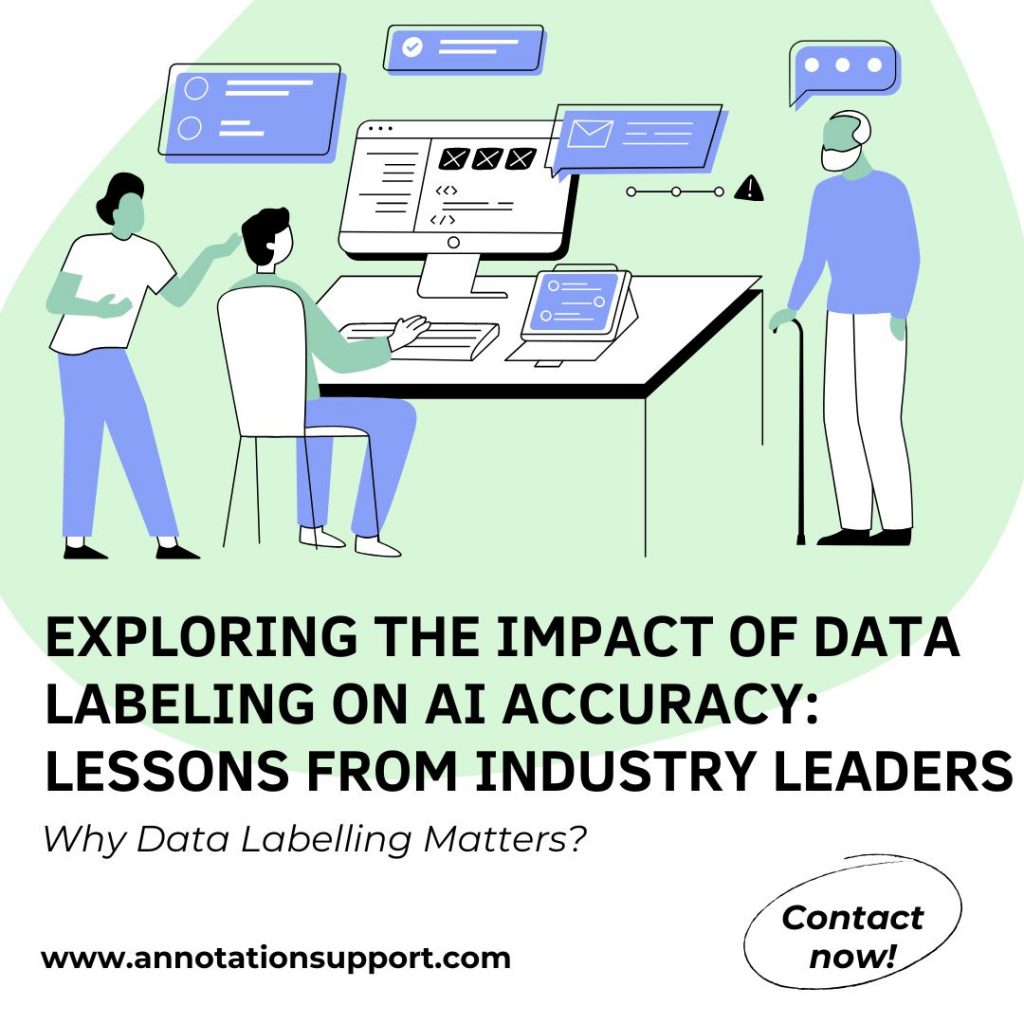Exploring the Impact of Data Labeling on AI Accuracy: Lessons from Industry Leaders
Introduction The performance of AI systems, and particularly those built on ML, very much depends on the quality of the data on which they are trained. Data labelling is one of the most important steps in this process – the process of assigning tags to or annotating raw data (images, text, video, etc.) to put meaning to it for training algorithms. Industry leaders in various fields have found out that data labelled badly produce wrong models, whereas data labelled well can increase the accuracy, robustness, and real-world applications of AI many-fold. Why Data Labelling Matters? 1. Foundation of Supervised Learning Labeled data is applied in the supervised learning, to train algorithms in the making of predictions or classifications. Label errors directly reflect to model errors. 2. Influences Model Generalization Well labeled data guarantees the AI systems to generalize from training to unseen data hence increasing their applicability in the real world. 3. Impacts Trust and Explainability Label precision allows models to pick up sensible patterns; their outputs thus become more plausible and reliable – a major consideration for impactful environments such as healthcare or finance. Key Lessons from Industry Leaders 1. Google: Quality > Quantity Google prefers label consistency over volume of dataset. In such projects as Google Photos or Google Translate, the company spent much on the researching: Lesson: Volume is not enough – clean, good labelled data is what makes the difference for high performance. 2. Tesla: Iterative Labeling for Self-Driving Tesla applies an iterative labeling, particularly for autonomous vehicles. Their “shadow mode” enables the car to learn from the real-world cases and mark suspicious predictions for further check-up and labeling. Lesson: Labeling and model feedback loops, that is, continually updating a model based on its interactions with its context, is a means to facilitate adaptation in complex circumstances, enhancing long-term AI accuracy. 3. Meta (Facebook): Scalable Annotation Services with AI Assistance Meta performs semi-automated labeling so that AI models pre-label data, and human annotators finalize or change the findings. This is a huge acceleration of the efficiency of data pipelines without compromising accuracy. Lesson: Human-AI collaboration scales annotation whilst maintaining label quality. 4. Amazon: Leveraging Crowdsourcing with Quality Control Amazon’s SageMaker Ground Truth combines crowdsourcing with quality controls that are automated, including: Lesson: Crowdsourcing is useful when matched with extensive validation mechanisms. 5. IBM: Domain-Specific Expertise In areas of healthcare, finance, IBM uses domain experts for data labelling. For example, radiologists annotate medical imagery for diagnostic AI, which means the labels actually have clinical context. Lesson: Complex domains need expert labellers and not workers in general. Common Pitfalls in Data Labeling Conclusion As AI systems are inserted more into critical decision-making procedures, the measure of accuracy of these systems is paramount to the quality of labeled training data. Industry leaders have proven that if there is strategic investment in data labeling using tools, processes, and people, then the model can be significantly improved. What should organizations building AI take home? Treat data labeling as an integral part of your AI development lifecycle and not as a secondary one.

